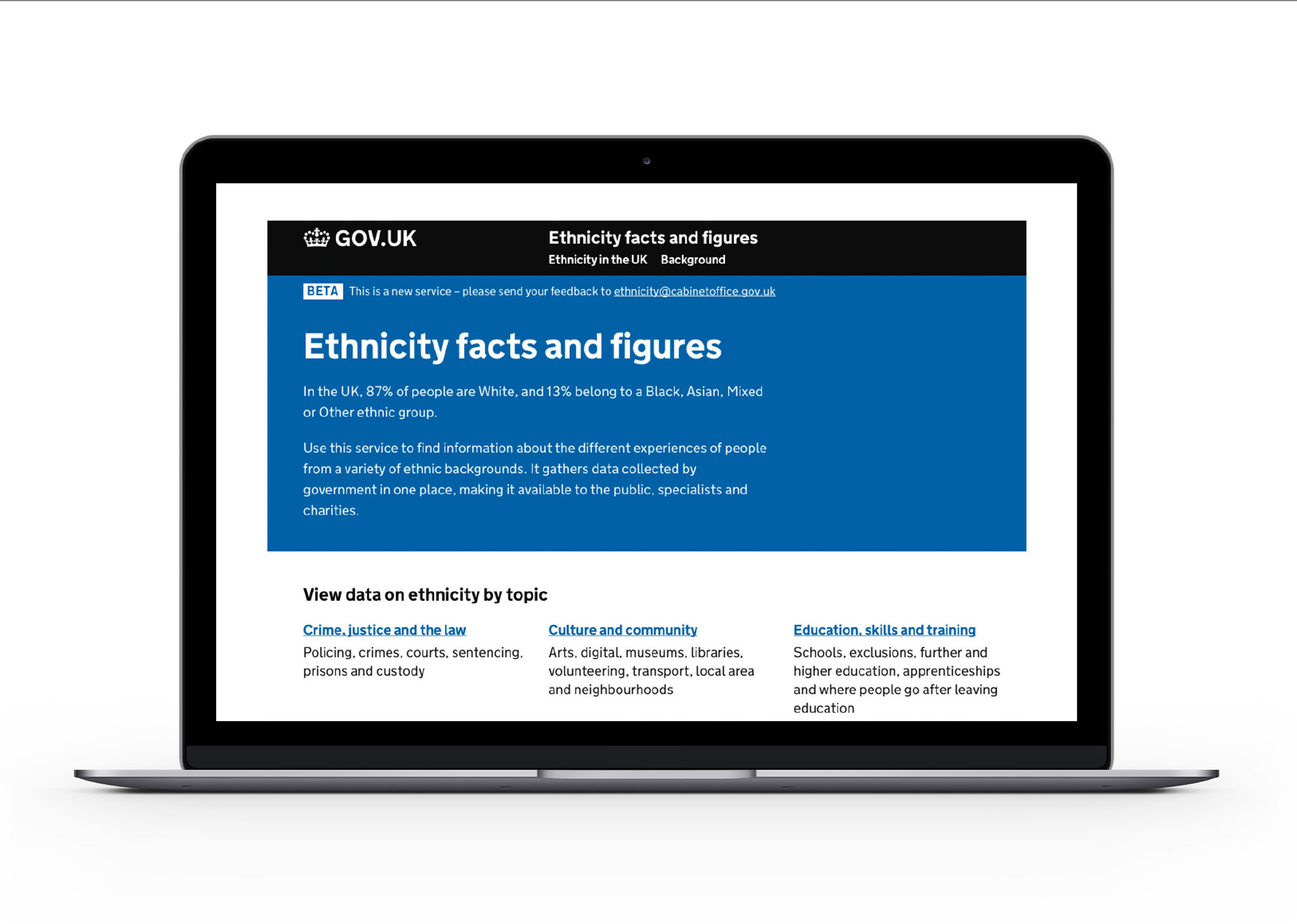The issue
The UK collects a vast amount of data about the ethnicity of public service users. What do we actually do with the data, and what does it tell us?
The purpose of the Race Disparity Audit is to collect and publish, on one purpose-built government website, data about ethnic disparities, including in education, employment, health, housing and the criminal justice system.
By ethnic disparities, we mean differences in treatment or outcome affecting people of different ethnicities. Are black people more or less likely to do well at school or university? Are Asian people more or less likely to be unemployed? Are white people more or less likely to experience poor health?
In order to improve public services for all ethnic groups, we need to take a long, hard look at questions like these and to understand if services are getting better or worse. In announcing the audit in August 2016, building on work on the Home Office Stop and Search data, the Prime Minister asked us to shine a light on these disparities and to identify where services needed to be improved for people from every background – even where that meant uncovering “uncomfortable truths”.

The focus
The audit is an innovative data project. In an increasingly digital age, the UK Government is presenting data about ethnicity in an accessible way. The aim is to inform the public, to contribute to a more well-informed debate about how ethnicity affects outcomes, to influence policy, programme or funding decisions, and ultimately to help improve services.
It publishes, in one place, a wealth of data about the experiences of people of different ethnicities across public services. Where possible, it will provide additional depth by breaking down the data by socio-economic status, income, geography, gender and age.
While much government ethnicity data is published already in reports and on websites, it can be very hard to find and even harder to interpret. Even when it is accessible, it is often published in formats designed for expert users, or in ways that only make sense to people already very familiar with the sector in question – for example, education or housing. The audit aims to address these issues by presenting a mass of data in a consistent way that is easy to understand.
The approach
Because the audit had no design blueprint to follow during its early stages, we agreed two important principles with ministers: first, that the data should meet high quality standards, so as to command the confidence of users; and second, because it would have to meet the needs of a wide variety of users – from members of the public to academics – that it should be extensively tested with real-world users before it was launched.
Throughout the project, to help ensure data quality, build trust and transparency, and improve the quality and added value of the website, we engaged with the leading national data and digital organisations (the Office for National Statistics, the UK Statistics Authority and the National Audit Office) and the expert open data community.
To understand the interests and needs of a diverse range of potential and existing data users, we regularly consulted a wide range of partners. These included leading academics, non-governmental organisations, think tanks, central and local government officials and analysts, and members of the public across the UK. Engagement was variously conducted through bilateral discussions, labs, roundtables and access to our private beta test website.
From the outset, the audit has been a cross-government project, with contributions from colleagues in many departments. While the bulk of the work in collecting, analysing and presenting the data has been done by statisticians and digital experts, we have additionally engaged with the policy community, who are also important customers for the insight the data will provide.
It is on the basis of these discussions and extensive in-depth testing of statistics, charts, tables, labels and language, that we have built the audit website.
The challenges
No major undertaking is without its challenges, but building a website that will house such a large volume of government data on ethnicity was no small task. The sheer scale of the audit was a significant challenge, and there were multiple technical and practical challenges to overcome.
Building a website takes a multi-disciplinary team with strong statistical, digital, policy and programme capabilities - we all needed to develop some cross-sectoral and -cultural learning, and an understanding of the complex subject matter of ethnicity.
The outcome
By putting all ethnicity data – and highlighting disparities – on one website, the audit may indeed highlight ‘uncomfortable truths’, but it also has the potential to be a game-changer.
It will shine a light on how ethnicity affects outcomes from public services. It will challenge departments to consider why there are disparities in outcomes for different ethnicities and add pressure to improve outcomes where these disparities are significant or persistent. It will also challenge government to improve the quality of the data it collects, improve the data infrastructure to ensure data is published in accessible ways, and to fill data gaps.
The audit is intended to establish a permanent website. The initial launch includes a limited number of data measures, and has the capacity to be extended and improved over time as new data becomes available across government and existing data is updated. It would also be consistent with the user-driven approach we have adopted for the website to be enhanced on the basis of user feedback and testing.
Much will depend on how the public and those in public services respond to and use the data that the audit will make transparent.
Recent Comments